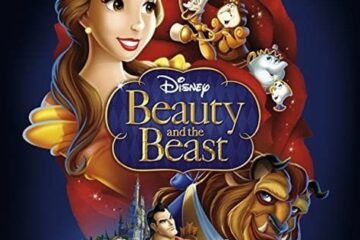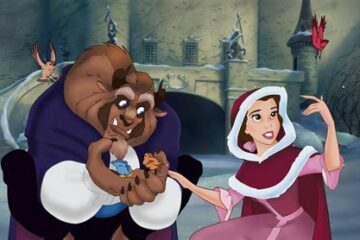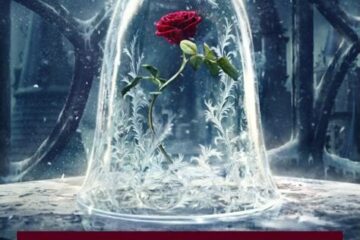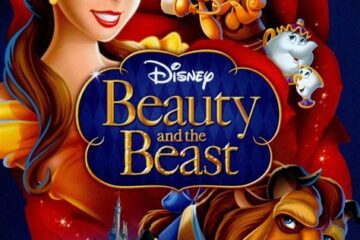The Evolution of Beauty and the Beast Cartoon Characters

The Evolution of Beauty and the Beast Cartoon Characters
Origins of Beauty and the Beast cartoon
Welcome to our blog post where we delve into the beloved tale as old as time – Beauty and the Beast. In this enchanting journey, we will explore the origins of the iconic Beauty and the Beast cartoon, tracing its roots back to the classic fairy tale. Join us as we uncover the captivating story behind the transformation of Beauty’s appearance, witness the beast’s remarkable character development and growth, and witness the evolution of the beloved supporting characters. Furthermore, we will also examine the profound impact modern adaptations have had on these timeless characters. Stay tuned for a magical exploration into the enchanting world of Beauty and the Beast.
Origins of Beauty and the Beast cartoon
The origins of the Beauty and the Beast cartoon trace back to the timeless fairy tale that has captured the hearts of generations. This enchanting love story has been adapted into various forms of media over the years, including books, films, and theater productions. However, it was the animated Disney film released in 1991 that truly brought the tale to life and solidified its place in popular culture.
The birth of the Beauty and the Beast cartoon can be attributed to the vision of Disney’s talented team of animators, directors, and writers. With a desire to create a film that would captivate audiences of all ages, they embarked on the daunting task of adapting the beloved story into an animated feature. The result was a groundbreaking film that combined stunning visuals, memorable characters, and a captivating soundtrack.
The Beauty and the Beast cartoon introduced audiences to Belle, a young girl with a love for books and a strong sense of adventure. Her journey into the enchanted castle, where she meets the Beast, is both a tale of love and personal growth. The transformation of Beauty’s appearance throughout the film is a reflection of her inner transformation as she learns to see beyond outward appearances and discover true beauty lies within.
The film’s iconic supporting characters, such as Lumiere, Cogsworth, Mrs. Potts, and Chip, also underwent their own evolution. From animated objects in the enchanted castle to beloved companions with unique personalities, these characters added depth and humor to the story. Their transformations mirrored the growth and development of the main characters, further enhancing the overarching theme of inner beauty.
Over the years, there have been numerous modern adaptations of the classic tale. These adaptations have brought new perspectives to the story, exploring different aspects of the characters and their motivations. These modern interpretations have had a significant impact on the way we perceive and understand the characters from the original Beauty and the Beast cartoon, breathing new life into the timeless tale.
- Origins of Beauty and the Beast cartoon
- Transformation of Beauty’s appearance
- The Beast’s character development and growth
- Evolution of supporting characters
- The impact of modern adaptations on classic characters
| Origins | Transformation | Character Development | Evolution | Impact of Modern Adaptations |
|---|---|---|---|---|
| The Disney team’s vision | Belle’s inward change | Beast’s journey towards humanity | Supporting characters’ growth | New perspectives and interpretations |
| Fairy tale to animated feature | Reflection of inner beauty | Companions with unique personalities | Enhancing the overarching theme | Bringing new life to the story |
| Captivating audiences of all ages | Seeing beyond outward appearances | Mirrored growth and development | Exploring different aspects | Perceiving and understanding the characters |
Transformation of Beauty’s appearance
Beauty and the Beast is a classic fairy tale that has captured the hearts of millions of people around the world. One of the most noticeable aspects of this beloved story is the transformation of Beauty’s appearance throughout the narrative. The evolution of Beauty’s appearance not only reflects her external transformation but also symbolizes her personal growth and inner beauty.
At the beginning of the story, Beauty is often described as plain and ordinary in appearance. However, it is her kindhearted nature and empathy that shines through, making her truly beautiful on the inside. This contrast between her external and internal beauty sets the stage for the transformative journey she embarks on.
As Beauty spends more time in the enchanted castle with the Beast, her appearance gradually changes. This physical transformation is directly linked to her emotional and personal growth. The Beast’s love and kindness towards Beauty play a significant role in this metamorphosis, as he encourages her to see herself as someone deserving of love and happiness.
- First, her posture becomes more confident and poised as she gains self-assurance.
- Second, her features soften, and her eyes radiate warmth and understanding.
- Third, her once somber clothing transforms into elegant and vibrant dresses, reflecting her newfound happiness and self-acceptance.
- Ultimately, Beauty becomes a beacon of beauty, not because of her outward appearance, but because of the love and compassion that radiate from within.
It is important to recognize that the transformation of Beauty’s appearance is not solely about her physical beauty. Instead, it is a visual representation of her growth as a person and her ability to look beyond surface-level appearances. This transformation serves as a powerful reminder that true beauty lies in one’s character, actions, and capacity for love and understanding.
| Before Transformation | After Transformation |
|---|---|
| Plain and ordinary appearance | Confident and poised posture |
| Somber clothing | Elegant and vibrant dresses |
| Features lacking warmth | Softened features, radiating warmth |
In conclusion, the transformation of Beauty’s appearance in Beauty and the Beast is a vital aspect of the story. It represents her personal growth, inner beauty, and capacity to see beyond superficial appearances. This evolution serves as a reminder that true beauty stems from within and is a reflection of one’s character and actions. Beauty’s journey teaches us that it is not our physical appearance that defines us, but rather the love, kindness, and empathy we show towards others.
The beast’s character development and growth
The character of the Beast in Disney’s “Beauty and the Beast” is a truly compelling one. Throughout the course of the film, we witness a significant transformation not only in his physical appearance but also in his personality and behavior. The Beast initially starts out as a ferocious and intimidating creature, filled with anger and bitterness due to his curse. However, as the story progresses, we see him slowly change and evolve into a kind-hearted and compassionate individual. This character development is a key aspect of the film’s narrative and plays a vital role in conveying its powerful message.
One of the most notable aspects of the Beast’s character development is his journey towards self-discovery and self-acceptance. Initially, the Beast is ashamed of his monstrous appearance and believes that he is unworthy of love and companionship. However, through his interactions with Belle, he begins to question these beliefs and learns to see beyond his physical appearance. This transformation is evident in the iconic scene where Belle tends to his wounds, showing him kindness and compassion. It is through this act of tenderness that the Beast begins to understand the power of love and gradually embraces his own humanity.
Another important aspect of the Beast’s character development is his ability to learn from his mistakes and grow as an individual. Throughout the film, we see him make various mistakes and display instances of anger and impatience. However, instead of remaining stagnant in his behavior, the Beast actively seeks to improve himself. This growth is particularly evident in the way he treats Belle, ultimately understanding the importance of her happiness over his own. By the end of the film, the Beast not only learns to love but also becomes a better person through his experiences.
In conclusion, the character development and growth of the Beast in Disney’s “Beauty and the Beast” is a powerful and significant element of the film. Through his transformation from a fierce and troubled creature to a loving and compassionate prince, the Beast teaches us the importance of self-acceptance, learning from our mistakes, and embracing our inner humanity. His journey serves as a reminder that true beauty lies within and that we all have the capacity to change and grow for the better.
Evolution of supporting characters
The evolution of supporting characters in stories and films is often overlooked, as the focus is usually on the main protagonist. However, these secondary characters play a crucial role in enhancing the overall narrative and adding depth to the story. Throughout the years, we have witnessed significant transformations in the supporting characters of various iconic tales. Let’s explore the evolution of supporting characters and how they have become integral to cinematic and literary masterpieces.
One of the notable examples of evolved supporting characters is in the classic tale of Beauty and the Beast. In the earlier versions of the story, such as the original fairytale and the 1946 French film adaptation, the supporting characters, including Lumière, Cogsworth, and Mrs. Potts, were merely household objects brought to life. They served as comedic relief and played minor roles.
However, with the release of Disney’s animated film in 1991, these supporting characters underwent a significant transformation. They were not just inanimate objects but lively, engaging personalities with unique characteristics. Lumière became the charismatic candelabra who loved to entertain, Cogsworth turned into the strict but caring clock, and Mrs. Potts became the motherly teapot taking care of Belle. These characters added humor, heart, and depth to the story, making them unforgettable and beloved by audiences.
This evolution also extended to the live-action adaptations of Beauty and the Beast. In the 2017 live-action film starring Emma Watson, the supporting characters were further developed, expanding their roles and exploring their individual backstories. This allowed the audience to connect with the characters on a deeper level, ultimately enhancing the overall viewing experience.
The impact of modern adaptations on classic characters
Modern adaptations have become a prominent aspect in the entertainment industry, particularly when it comes to classic characters. These adaptations bring a fresh perspective to well-known, beloved characters, while also introducing them to new audiences. The impact of modern adaptations on classic characters is significant and often leads to an evolution in the way these characters are perceived and portrayed.
One major impact of modern adaptations on classic characters is the revitalization of their stories. By reimagining these characters in contemporary settings or through different mediums, such as film or television, creators breathe new life into old tales. This not only gives classic characters a chance to resonate with modern audiences but also allows for new interpretations and narratives to emerge.
A notable example of the impact of modern adaptations is the transformation of Beauty and the Beast. The classic fairytale has been adapted numerous times, with each adaptation adding its own unique twist. From animated features to live-action films, Beauty’s appearance has gone through various transformations, capturing the attention and fascination of audiences worldwide. These adaptations have not only influenced the physical appearance of Beauty but have also explored her character in depth, highlighting her intelligence, bravery, and independence.
- Physical appearance: In modern adaptations, Beauty is often portrayed as having a more diverse and inclusive appearance. This shift emphasizes the importance of representing beauty in different forms and defying conventional standards.
- Character development: Modern adaptations delve into Beauty’s character, providing her with more agency and depth. She is often portrayed as an empowered young woman, showcasing her determination and strength.
- Evolution of supporting characters: Modern adaptations not only focus on Beauty’s transformation but also explore the growth and development of supporting characters. Characters like the enchanted household objects or even the Beast himself undergo significant changes, adding new dimensions to the overall story.
Furthermore, modern adaptations often incorporate themes and messages that are relevant to contemporary society. By infusing classic characters with modern sensibilities, they become relatable and resonate with a wider audience. This is particularly evident in the depiction of the Beast’s character development and growth.
| Classic Beast | Modern Beast |
|---|---|
| Initially depicted as monstrous and aggressive. | Shown as a complex individual with a troubled past, capable of change and redemption. |
| Characterized by his physical appearance rather than his personality. | Explores the psychological and emotional transformation of the Beast, making him a more sympathetic and compelling character. |
| Relies on Beauty for his personal growth. | Portrays a more independent Beast who learns to love and value himself, independent of Beauty’s influence. |
The impact of modern adaptations on classic characters is undeniable, as it allows for a continuous exploration and reinvention of beloved stories. By reimagining these characters, adaptations not only preserve their legacy but also ensure their relevance in the ever-changing landscape of entertainment. Whether it’s through visual changes, character development, or the introduction of new perspectives, modern adaptations breathe new life into classic characters and engage audiences in exciting ways.
Frequently Asked Questions
What inspired the creation of the Beauty and the Beast cartoon?
The origins of the Beauty and the Beast cartoon can be traced back to traditional fairy tales and the French version written by Jeanne-Marie Leprince de Beaumont, which served as the basis for the Disney adaptation.
How did Beauty’s appearance transform throughout the story?
Beauty’s appearance undergoes a transformation from a simple village girl to a stunning princess-like character, reflecting her personal growth and inner beauty.
How does the beast’s character develop and grow throughout the narrative?
The beast’s character experiences a gradual transformation from a ferocious, isolated creature to a compassionate and loving being, thanks to his interactions with Beauty and the power of love.
How have the supporting characters evolved over time?
Supporting characters like Lumière, Cogsworth, and Mrs. Potts have developed more depth and personality with each adaptation, adding humor and emotional depth to the overall story.
What impact have modern adaptations had on the classic characters?
Modern adaptations of Beauty and the Beast have provided opportunities to explore the characters’ motivations and backstories, giving them a more complex and relatable dimension.
How are relationships portrayed in Beauty and the Beast?
Beauty and the Beast showcases the importance of looking beyond physical appearances and forming deep emotional connections, emphasizing the transformative power of love and understanding.
Why does the Beauty and the Beast story continue to captivate audiences?
The timeless themes of selflessness, redemption, and the triumph of love over adversity in Beauty and the Beast make it a story that resonates with people of all generations, ensuring its enduring appeal.
The Beauty and the Beast Cartoon Soundtrack: A Musical Journey
September 29, 2023Analyzing the Themes and Symbolism in Beauty and the Beast Cartoon
September 28, 2023Top 10 Beauty and the Beast Cartoon Episodes You Need to Watch
September 26, 2023Exploring the Magical World of Beauty and the Beast Cartoon
September 26, 2023A Deep Dive into the Making of Walt Disney’s Beauty and the Beast
September 26, 2023
Leave a reply Cancel reply
Recommended
-
“If I Can’t Love Her Beauty and the Beast” Book Review
July 13, 2021 -
Beauty And The Beast Gaston Song Lyrics
August 21, 2023 -
Beauty And The Beast Bonjour Song Lyrics
August 24, 2023









